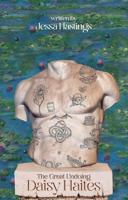Publisher's Synopsis
This historic book may have numerous typos and missing text. Purchasers can usually download a free scanned copy of the original book (without typos) from the publisher. Not indexed. Not illustrated. 1874 edition. Excerpt: ... THE SANHEDRIN. 491 This view of the Talmud is slightly touched upon by Ewald, though he makes no attempt to illustrate it by the comparative method. "When a supreme law of life," he says, "has been already given, and without troubling themselves about its ultimate foundations, men are only desirous to work it out into detail, and, if necessary, to bring it into actual life by means of a countless multitude of new regulations, . . . similar conditions everywhere produce similar results. The scholastic labours of the Middle Ages and those of the Papal jurists . . . are essentially the same."1 "Les meilleurs des hommes," says fienan,2 "ont ete des juifs; les plus malicieux des hommes ont aussi ete des juifs. Race etrange, vraiment marquee du sceau de Dieu, qui a su produire parallelement et comme deux bourgeons d'une meoie tige l'Eglise naissante et le fanatisme feroce des revolutionnaires de Jerusalem, Jesus, et Jean de Giscala, les apotres et les zelotes sicaires, l'Evangile et le Talmud! Faut-il s'etonner si cette gestation mysterieuse fut accompagnee de dechirements, de delire, et d'une fievre comme on n'en vit jamais?" The turn of expression is open to criticism, but the fact is striking. EXCURSUS XIII. (Vol. II., p. 352.) The Sanhedkin. Orthodox Jews ascribe the origin of the Sanhedrin to Moses (Exod. xviii. 24--26, ifee), and identify it with the "elders of Israel" in Ezek. viii. 11, 12, and the "elders of the Jews" in the days of Darius (Ezra vi. 8.)3 Some even saw a germ of the Sanhedrin in the tribunal established by Jehoshaphat (2 Chron. xix. 8--ll).4 The Sanhedrin was the successor of the Great Synagogue, the last..."




















